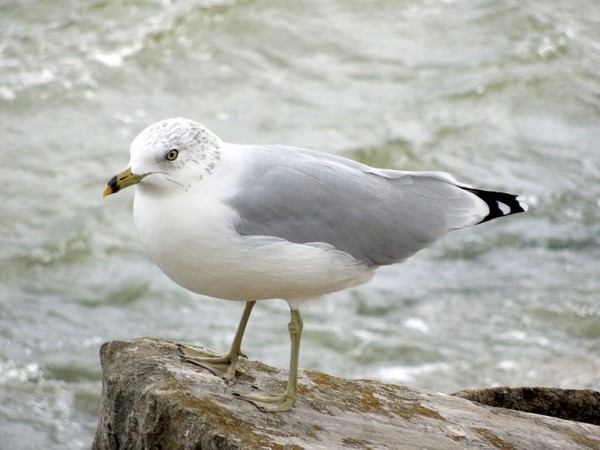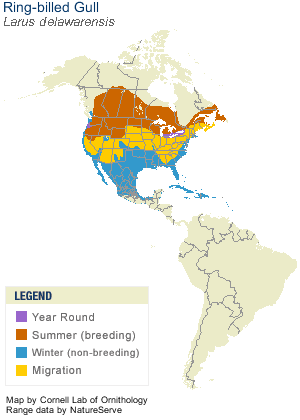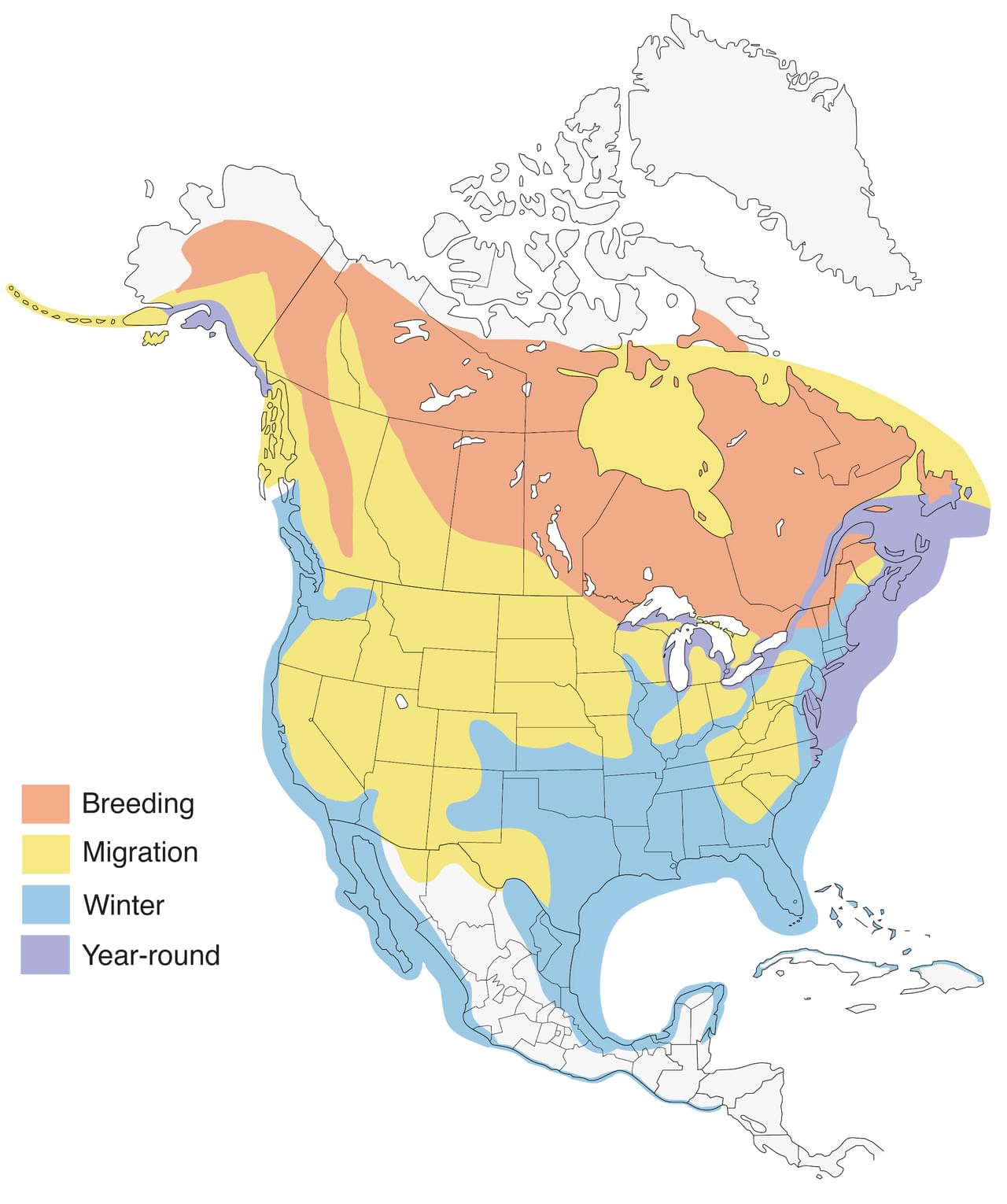
6 January 2017
It’s tempting to call them “seagulls” but quite a few species of gulls don’t care about the sea. This is one of them.
Ring-billed gulls (Larus delawarensis) are surprisingly continental birds. Most breed in interior North America, migrate near fresh water, and spend the winter on the coast or at inland lakes and rivers, landfills and shopping mall parking lots.
They like to live near water because it’s safer to sleep on water than on land, but they don’t need the ocean at all. A lake or river will do. And parking lots are great for daytime loafing.
The ring-billed gull’s range map, linked here from All About Birds, shows their inland preference. It’s the reason why they’re so plentiful in Pittsburgh in the winter.

To prove their land-loving ways, here are three ring-billed gulls courting and arguing far from the ocean. The parking lot is in Crystal Beach, Ontario across the water from their large nesting colony in Lackawanna, New York.
Ring-billed gulls will tell you, “I’m not a “sea” gull. I’m just a gull.”
(photo from Wikimedia Commons, range map linked from AllAboutBirds.org. Click on the images to see the originals in context. Gull video by Jay Burney on YouTube)
I’ve quit trying to convince people that the word ‘seagull’ does not appear in any bird guide.
Your map isn’t accurate, I live in Newfoundland and we have gulls year round.
Chris, the ring-billed gull map is embedded from Cornell’s All About Birds website and is not under my control. However I wondered why it indicates only-in-breeding-season, so I checked eBird reports of ring-billed gulls in Newfoundland from Dec-through-Feb for the past 10 years. Indeed there are many gulls at Newfoundland in winter but ring-billed gulls are rare. They are just single individuals mixed in with hundreds of herring gulls. The herring gull range map shows them present year round in Newfoundland

Those particular range maps don’t show the rare occurrences.